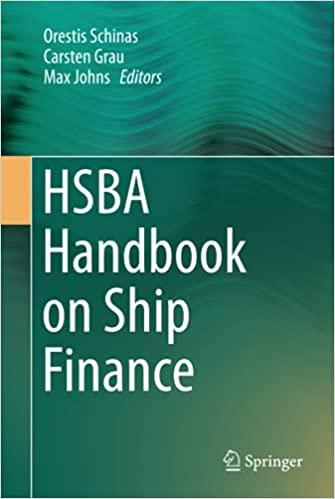Question
Consider two risky assets with the following attributes: E[R] Stock 1 80% 50% Stock 2 20% 30% Suppose the two stocks have correlation = 0.6
Consider two risky assets with the following attributes:
|
| E[R] |
|
| Stock 1 | 80% | 50% |
| Stock 2 | 20% | 30% |
Suppose the two stocks have correlation = 0.6
Fill in the missing entries in the following table for various portfolios of the two stocks:
| y | 1 - y | E[R] | st dev |
| -0.2 | 1.2 | 8.00% | 31.05% |
| -0.1 | 1.1 | 14.00% | 30.27% |
| 0 | 1 | 20.00% | 30.00% |
| 0.1 | 0.9 | 26.00% | 30.27% |
| 0.2 | 0.8 | 32.00% | 31.05% |
| 0.3 | 0.7 | 38.00% | 32.31% |
| 0.4 | 0.6 | 44.00% | 34.00% |
| 0.5 | 0.5 | 50.00% | 36.06% |
| 0.6 | 0.4 | 56.00% | 38.42% |
| 0.7 | 0.3 | 62.00% | 41.04% |
| 0.8 | 0.2 | 68.00% | 43.86% |
| 0.9 | 0.1 | 74.00% | 46.86% |
| 1 | 0 | 80.00% | 50.00% |
| 1.1 | -0.1 | 86.00% | 53.25% |
| 1.2 | -0.2 | 92.00% | 56.60% |
If you target an expected return of 35%, what is the lowest standard deviation you can achieve?
In the diagram on the following page, show the positions of the y = -0.2,0,0.2,0.4,0.6,0.8,1 portfolios (seven portfolios). Label them clearly. Then, draw the investment opportunity set as best you can. What shape does it have?
Now suppose the correlation between the two stocks were =-0.4 instead. Now if you target an expected return of 35%, what is the lowest standard deviation you can achieve? How does this compare to your answer in Problem 2?
In the same diagram below, roughly sketch the investment opportunity set when the correlation is =-0.4 (maybe use a different color to distinguish it from your answer in 3). How do the two invetment opportunity sets compare? Which is more desirable?
Step by Step Solution
There are 3 Steps involved in it
Step: 1

Get Instant Access to Expert-Tailored Solutions
See step-by-step solutions with expert insights and AI powered tools for academic success
Step: 2

Step: 3

Ace Your Homework with AI
Get the answers you need in no time with our AI-driven, step-by-step assistance
Get Started


